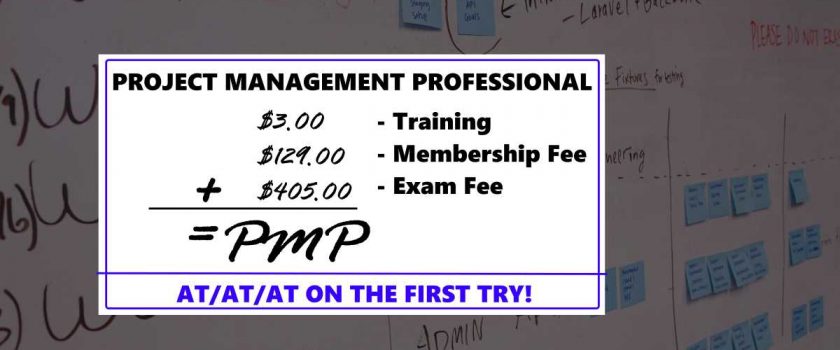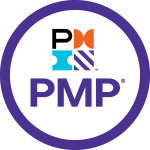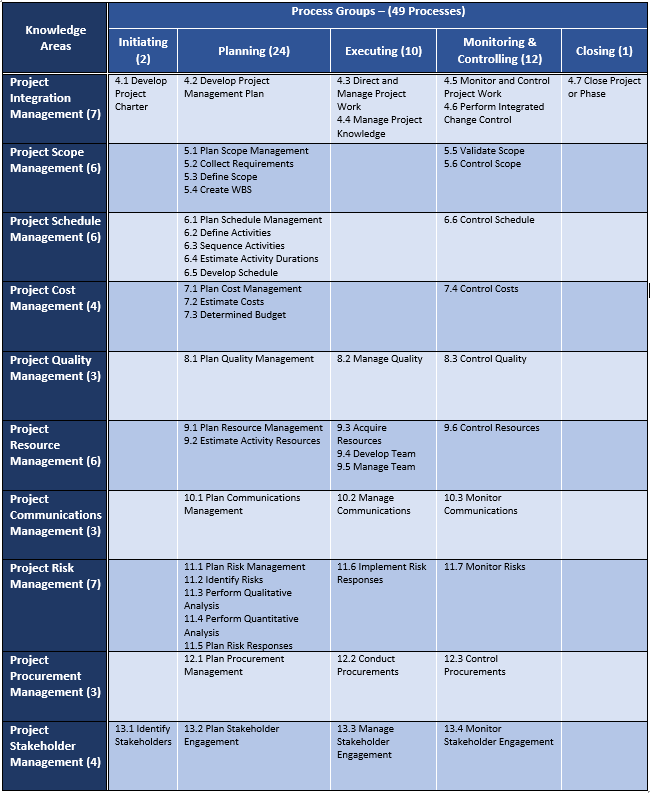
The Project Management Institute (PMI) offers a world-renown certification called Project Management Professional (PMP). The 2021 PMP certification has changed to being 50% waterfall and 50% agile development methodology in 2021. For those new to projects, these are very different approaches to managing projects.
In this article I talk about the evolution of the PMP exam and how it affected my journey studying for it.
50% Waterfall and Agile
The PMP certification was originally created for the manufacturing industry. Today there are over 1 Million PMP-certified individuals around the world. In the past, you would need to take an agile-specific certification and PMI offered one.
Now that agile is combined into the PMP certification, we will all soon see if agile only certifications continue to have any value. Considering that Scrum is a type of agile approach, then certification focusing only on scrum may also have less value compared to a PMP certification. Ultimately, it’s important to consider that Agile, Scrum, and related concepts have been used exclusively by the IT community so far
The waterfall methodology came from the manufacturing industry and applies to a range of industries including, real estate, automobiles, avionics, and more. The idea that people in these industries will have an use or interest in Agile is an interesting gamble by PMI. If you are new to Agile concepts, try a platform like FolioProjects.com which supports Kanban, sprints, and more. Here is an example video showcasing agile development
Qualifying For The Certification
PMI audits applications and unfortunately, not everyone will qualify. There are a few ways to qualify to take the certification.
- 6 years of verifiable experience in project management
- Degree + 3 years of experience in project management
Luckily, I’ve been working on IT projects for over a decade. I also have a degree in computer science. So for me, the experience requirements were trivial. However, I went through a scenario where the qualifying process evolved before I was done qualifying.
At one point, you had to account for 4500 consecutive hours of project management. You also had to have references that would vouch for those hours if audited by PMI. Then around the time that the test changed, the application changed to simply requesting 36 months of experience.
Studying for the PMP
Here we come to the important part. Here, I will explain how I passed the test with Above Target (AT) on the 3 domains
- People
- Process
- Business Environment
I could go on and on. There is also an Agile Practice Guide for 2021. That goes into agile in depth including
- Sprints
- Roles
- Types e.g. Scrum, Extreme Programming.
- Estimating
That also goes on and on. There is a lot to cover and although I cannot reveal the test secrets, I can echo what others have said. Consume the information and understand it, compared to trying to memories it. The test is all situational and rarely if ever have a direct answer from the study material
My Personal Study Experience
This all sounds very difficult so I’ll tell you how I did it. I had to relate the terminologies in the study guides with my personal experience as a project manager. Without this experience, studying would have been far more difficult for me.
With that said, the process was not easy. Many times I was very confused because in some cases at work, we did the wrong thing, called it something else, or did them in the wrong order.
Lastly, I had the unfortunate scenario of planning to take the test right around the time the world slowed down. For a few reasons, I delayed taking the test until the curriculum changed.
I personally love studying by using test simulation applications. However, in the case of the PMP, the problem is that these tests are not from PMI and do not resemble the real test. I could easily create 180 test questions by looking at the study guides. Apps may help you to remember the raw information but don’t simulate the real test. In fact, at the end of my studying, I noticed errors in all resources outside of the provided study guides. Its like how every version of the bible is a different interpretation of the original.
For most, education costs thousands of dollars and is employer-sponsored. For me, I received my required PDU’s from a $2.99 class on udemy.com during a sale special. That and the study guides were enough for me to study. When the test updated, the classes on Udemy updated.
PMP Exam process
You can take the exam at a physical location with proctors. I personally took the exam at home on my computer. In this case, you have to:
- Download and test their exam app
- Opt out or accept two 10 minute breaks during the test
- From my memory, you cannot go backward once offered the 10 min break
- Clear your desk of everything other than the computer
- Show the proctor your desk and space
- Complete and submit all questions
For me it was grueling. I did not know if I was passing the test while proceeding through the sections. By the end of the test, I was exhausted. At the same time, I was cognizant that based on my velocity, I was only a little ahead of the clock. This caused me to put little effort into the last 10 questions. I would even suggest that at this point, the questions began looking similar and so I answered them in similar ways. Supposedly the test is adaptive so this isn’t exactly a ridiculous observation on my part
PMP Alternatives
The PMP is popular in North America. If you live in England or Australia, easier certifications like PRINCE2 may be more recognized and actually required.
I have seen many articles comparing a PMP certification to an MBA. It could be argued that a similar amount of time investment is needed for both. However, the subjects covered by them a very different and not comparable. Furthermore, their knowledge areas seldom overlap, making the designations complementary VS competitive. So if you have one title and you are considering adding the other, in my view there is strong value depicted by having both. With that said, few job postings require both, further confirming that the skillsets are very different.
You should look at the types of jobs that you would like and confirm the qualifications that they are looking for. With this approach, you can confirm the economic value in relation to your situation.
Perks of the PMP Certification

Once you are one of the lucky few to actually pass the exam, you are granted a few privileges during your revolving 3-year membership term. At last check, these include the ability to
- Add the PMI® badge to your Twitter, Facebook, website, resume, etc
- Add the PMP® designation to your signature and resume
- If you opt-in, your name and details will be listed in the PMP® directory within 48 hours.
- A PMP certificate is mailed to you
There are many studies easily found online showing projections of an increase in your salary based on the PMP certification. In reality, they say the same thing for an MBA; however, the level of realized success depends on the individual. You still need to prove that you are a proficient project manager. With that said, the highest paying project management-related jobs are typically reserved for those with the PMP designation.
Continuous Improvement
Now that you have passed and joined the ranks of over 1 Million certified professionals, the journey is not done. Yes, you can:
- Add the PMP designation to your resume
- Add the PMP designation to your signature
- Apply for jobs looking for PMP certified people
You will need to attain 60 PDUs every 3 years to maintain your PMP status. These can be attained through continuous education or through educating others about PMP. Also, note that this privilege comes with a renewal cost at the end of every term.
I personally attained my first 1 PDU and the process was very simple. I first saw the opportunity to earn a PDU via an email. I am subscribed to PMI and I’m a member of my local chapter. The email specified an upcoming online learning event called “Agility and Change Management #2”. Here is how it breaks down
- .5 – Technical
- .5 – Strategic & Business
To claim the PDUs, at the end of the presentation, they gave the viewers a special code. That special code is entered into the PMI system via your dashboard. There you will have an opportunity to review the breakdown of pointest noted above and contest them. Details shown also include the presenter, what was presented, and other details. Assuming you accept them as I did, the PDUs are immediately reflected in your dashboard.
Conclusion
Is it worth the effort? All successful candidates seem to express an appreciation for the test. It provides a framework to rely on when you need feedback. The PMP also provides roles and names for a lot of the activities you intuitively performed during your job. So from my perspective, if your daily job includes project management, then you will find value in this certification. In addition, there are many published articles suggesting that PMP holders make more than their non certified project management counterparts. More money typically factors into the question of worth for most people
If interested in hiring any of our PMP certified project managers for your next IT project, contact us here.
ABOUT THE AUTHOR

Noble Hurst BSc, PMP, ITIL
Over 15 years of experience from the US and Canada from startups to Fortune 500 companies. I bring decades of experience from a range of industries including technology, film, construction, marketing, and logistics.

